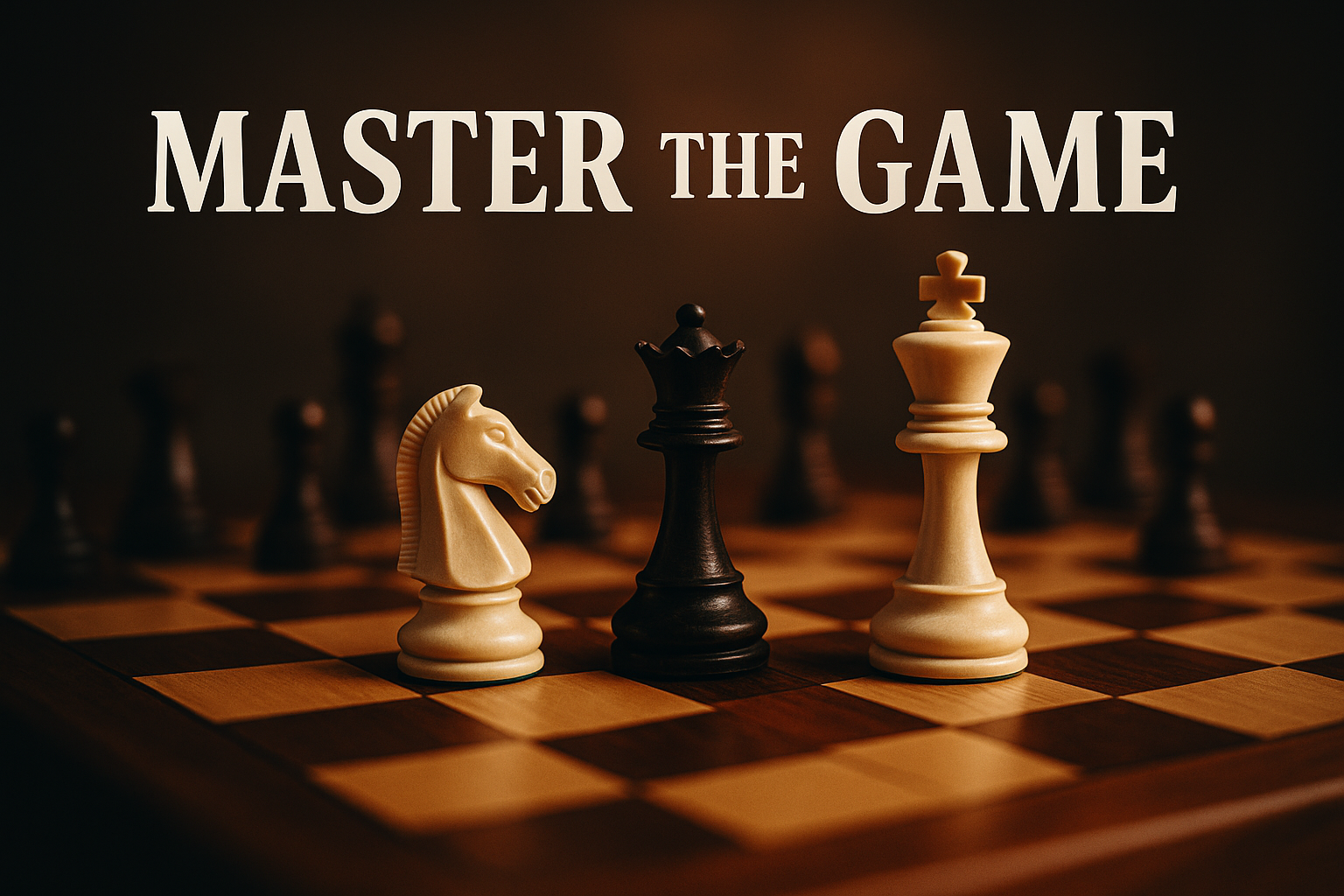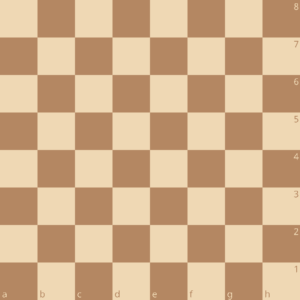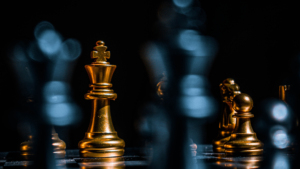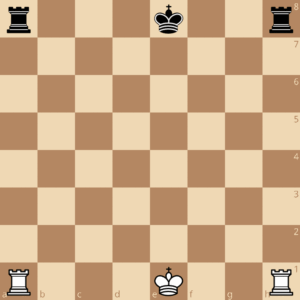You learned about the chessboard – how the chess pieces move, the checks, and the checkmates. Now you are thinking I am going to crush that friend in chess who always tops in the class and doesn’t know chess. Oh, what a fantasy!
You won some “easy” level games in a mobile app. Now you are prepared to beat everyone else. But somehow you couldn’t win against your friends. You were embarrassed in front of everyone.
On the way home, you are thinking – What did I do wrong?
Sounds familiar? I am pretty sure it does if you have started to play chess recently.
I was in your shoes too. I won some of the “easy” and higher-level games in mobile apps – I didn’t know lichess and chess.com existed then 😅 – but somehow, I was struggling to win against humans. My uncles and friends humiliated me in some games.
It was so embarrassing – to be honest – to lose in front of everyone.
In both scenarios you and I were missing a crucial part of the game. It’s the phases of the game and the knowledge behind it.
In this article we’re going to dive into the realm of the opening, the middlegame, and the endgame – the phases of a chess game. After walking through this whole guide, you will understand that what are these phases, how to play them correctly as a beginner – and of course – eventually win a match against that topper friend.
So, without further a dew, let’s jump into it! 🔥
What is the Opening Phase in Chess?
Every chess game is a story. It’s a battlefield. From the first move to the very last – you travel through pure art. Openings are the doorway to enter this story.
The idea is that you prepare for the battle ahead. Arranging your pieces correctly and effectively to prepare a strong attack is the primary objective of the openings.
In a real battle, you do not want your troops positioned where they cannot see or attack the enemy in the field – and where they can be attacked by the opposition easily in return.
“Why?”, I ask to you.
Because you didn’t come with the intention to lose.
That is the whole idea behind openings in chess.
Openings are the first 5-15 moves in chess. Some may say it is 10-15 moves. Either one is completely fine. As I mentioned earlier – openings are the process to get prepared for the battle. Both the players in game gets the same starting positions. You will try to bring your pieces to more active squares in each passing move to make your preparation stronger. Additionally, you will have to look to control the center of the board as well. We will talk about it in a second.
If you are a nerd, you must be hungry for more details. Are you hungry?
Who am I asking to?! Of course you are! That’s why you are here in the first place.
Key Principles of Chess Openings
You know the idea behind chess openings. A proper opening play can bring you a significant advantage for the phases that follow. That is why playing it correctly is crucial.
There are some simple steps to follow for a great opening play. I’ll provide you with a brief guide of this. Let’s start with –
Control the Center:
Chessboard is a64-squared board. It does not explicitly have a center – since the number of squares is an even number. But the central 4 squares are considered the “center of the board”.
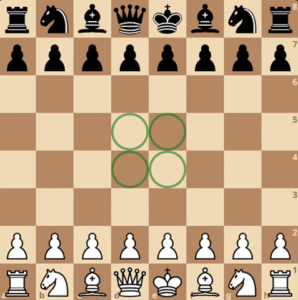
The squares are e4, e5, d4, and d5.
The squares surrounding these 4 squares are also considered the central ones. But the first four is the core.
The longer you have control over these squares, the longer you are in control of the game.
Develop Your Pieces
You heard economic development, social development, web development – what the heck is a development in chess?
Well, it’s the development of the pieces on the chessboard.
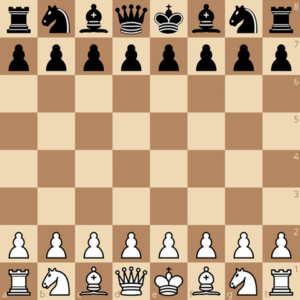
This is the starting position in chess. At this stage, you will notice that the pieces – at the 1st rank (for white) and the 8th rank (for black) – are sort of “jailed” – they cannot move.
You don’t want your soldiers to be caged all at one place in a battle. You want them in the best places where they can actively participate and attack the opposition.
Chess is not an exception here. You must place your pieces in a square where it can see or control more squares than they could from their starting position. Specially the bishops and the knights – aka the minor pieces.
Let me make this clearer with an example.

Take the white knight on g1 for the experiment. This knight sees only two squares from its starting position – f3 and h3. As soon as you move the knight to f3 on the first move of the game, suddenly the same knight attacks twice as many squares as previous – excluding the original square g1. Now your opponent has to think twice before moving their pieces to these squares.
The knight became more active as soon as it left the original position and ran towards a central square. This journey – from inactive to an active piece – is called the development of pieces. And this is true for the other pieces as well.
Keep Your King Safe
The main goal in a game of chess is to trap the king. You want to seize your enemy king as early as possible – so does your opponent. Therefore, you must ensure your king’s safety as soon as possible in the game.
But how can you achieve that?
It’s simple – castle at the right time.
Castling is the sole move in chess that is objected to place the king at the safest spot possible in the board – the corner. It is then surrounded by both the minor and major pieces, alongside the pawns in front. This allows you not worry much about your king and initiate an attack.
P.S. There will be situations where castling might actually cost you the game – i.e. like a semi-open or an open file aimed at your king. But in general, for the beginners, it always helps you to hide your king.
There are some more opening principles that are worth learning. But for the time being you will be just fine to win the next “hard” level of that chess app you installed.
If you have come this far, you awesome! You are a nerd.

Middlegame in Chess
Openings are mostly theory. Once you are past the openings or theory, you often find yourself in a completely new position – one that might be happening for the first time in the history of chess. This is where the real thinking begins. You are in a territory no one else had explored before. Only better tactics, a good strategy can lift you out of this complexity. And thus, you have entered in the phase what is called the middlegame in chess.
In this part of the game, you are entirely on your own. This is where the art of thinking truly takes place. There might be some hidden tactics on the board. Finding them and creating your own chance of winning is the heart of middlegame. Middlegame is the hardest part of a chess game according to many players.
With a few key ideas in mind, you will be able to move past the beginner phase you are currently stuck very soon.
- Get Familiar with Some Basic Tactics
- Create Imbalance
- Have a Plan
Basic Tactics:
If you want to do good in the middlegame, you have got to learn tactics. Because they are all over the board lurking in front of your eyes.
Learn the basic tactics first. Those includes the pins, forks, X-rays, annihilation.
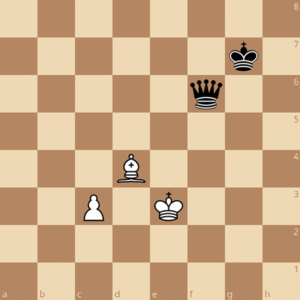
See the diagram above. Black queen is under attack. But it cannot be moved – otherwise you will sacrifice your king 😅. Just kidding. It would be an illegal move. Black queen will be captured anyway. This is the power of a pin.
Have a look another tactic – the fork.
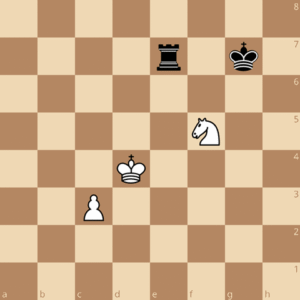
A fork refers to an attack on two pieces at the same time. The white knight above is attacking both the king and the rook. Since it’s a check, black must respond to it – and thus black loses its rook. Forks let you win material – which is extremely important in middlegame phase in chess.
Create Imbalance:
Imbalance in chess essentially means that one player has more material than the other, or one might have a slight advantage in the position.
What do I mean by “advantage”? Well, it can be defined in many aspects. A pawn structure for example. Initially the pawns are lined up side-by-side – which is more effective while pushing them towards the end of the board. That is easy, right?
But once you have a doubled – or sometimes tripled pawns – it gets quite difficult to develop pieces. Sometimes it stands against your own pieces. You lose tempo (a move basically).
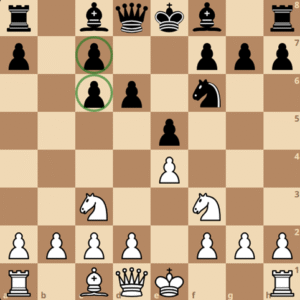
The imbalance can also be in materials. An extra pawn, extra major or minor piece can play a significant role in deciding the winner. So, it is important to create an imbalance to the opponent’s territory in middlegame.
Have a Plan:
Playing middlegame without a plan is like sailing a ship in the ocean without a destination. You will be lost in the vast waters without an explicit direction. Chess works the same way. Your pieces as well as your valuable position will be lost without purpose – and that will often bring you trouble – maybe cost the game.
You must have a clear idea of what you want to achieve in the current position. With improving your own position in each move – you can walk closer your goals. It can be anything that will gift you with a win. Creating weaknesses, weakening the enemy king, executing a mate-in-three are all plans. But you must have one in order to do well.
Know the Chess Endgame
Endgame is the final and a crucial phase in a game of chess. It begins when more than half of the pieces have been traded off on the board. In the beginner level, payer often left with rooks, some pawns, and their kings during this stage.
There are lots of theories in endgame – some specific positions that can be won with a proven sequence of moves.
Since you are a beginner – I would suggest you to start by learning the basic theoretical endgame. I will tell you why.
The reason is I KNOW. Because I was at your shoes also. I know what helped me to climb up the tree. So, hear me out.
Learn the following endgames and you will be fine.
- King and Pawn Endgame (The Most Basic One)
- King + Rook vs King Endgame
- King + Queen vs King Endgame
I am a good teacher – so I won’t give you too much homework. If you master these three endgames – you will be ahead of more than half the beginners out there. Of course, there are branches and sub-branches of each – but the basics alone would boost your confidence.
At least you can trade off all the pieces and wait for the rook endgame 😁
Conclusion
Chess is hard – but it is fun you must admit. It may seem overwhelming at first to take all these at once. And that is completely normal. Usain Bolt didn’t become the fastest man on earth the moment he was born; Michael Phelps didn’t become the greatest swimmer overnight.
It takes practice and patience to do something worthwhile. Walk through the steps I just shared – you will not regret it.

